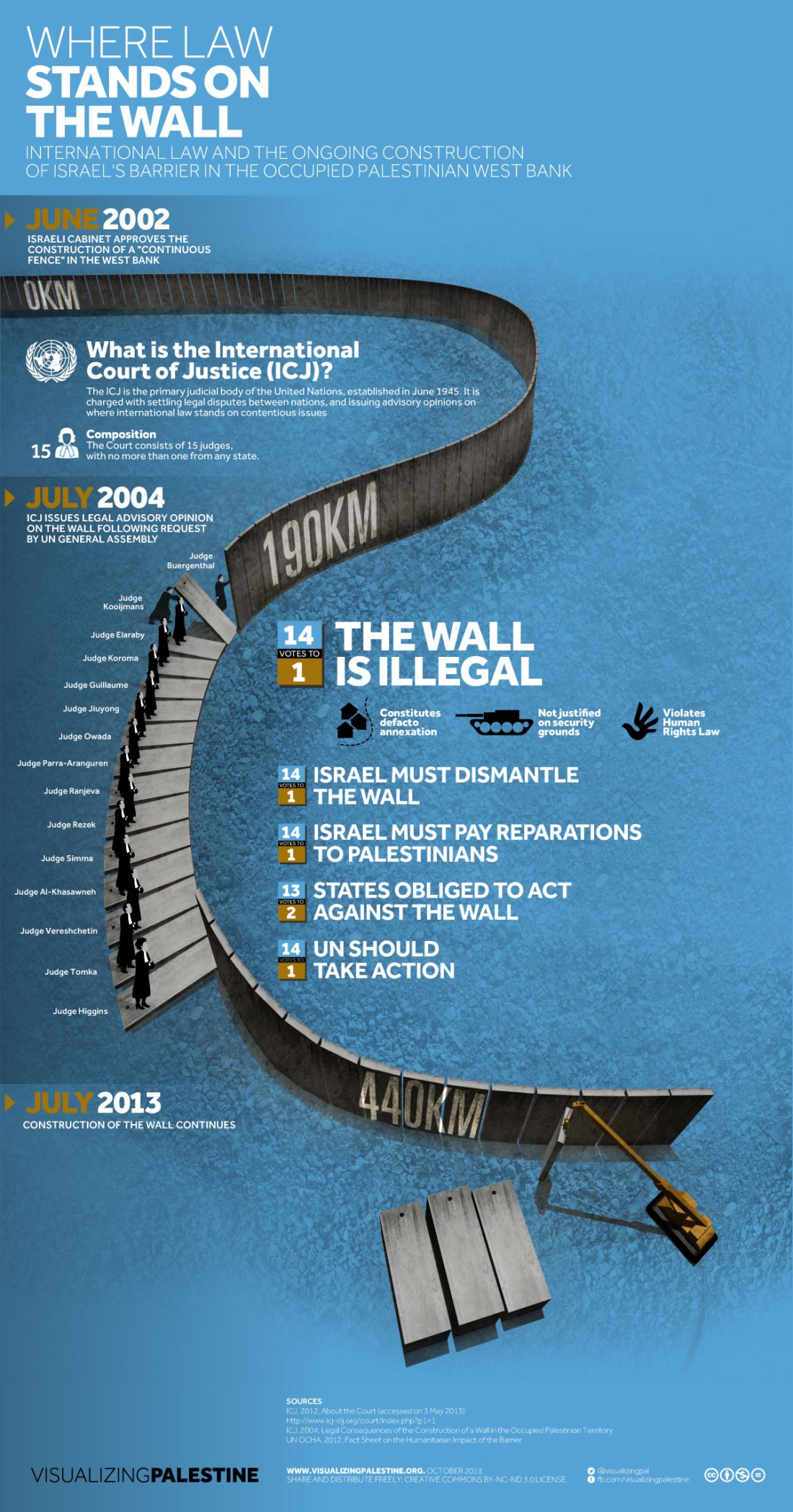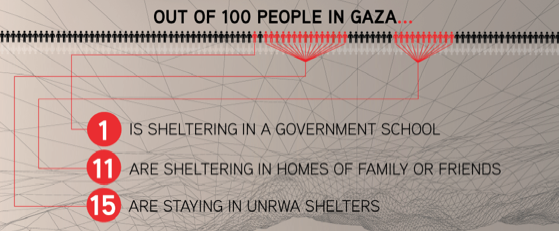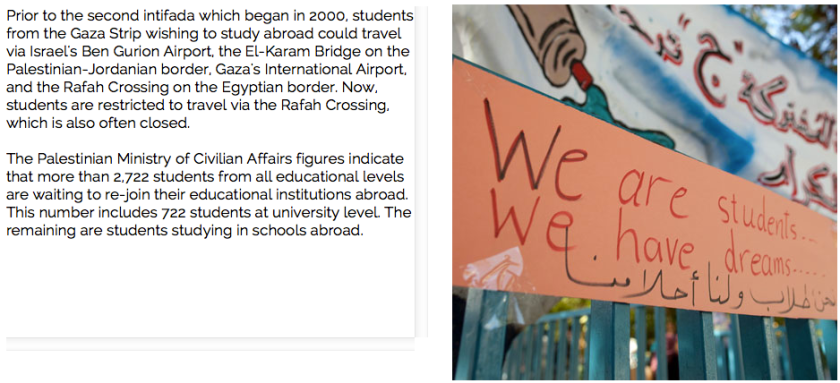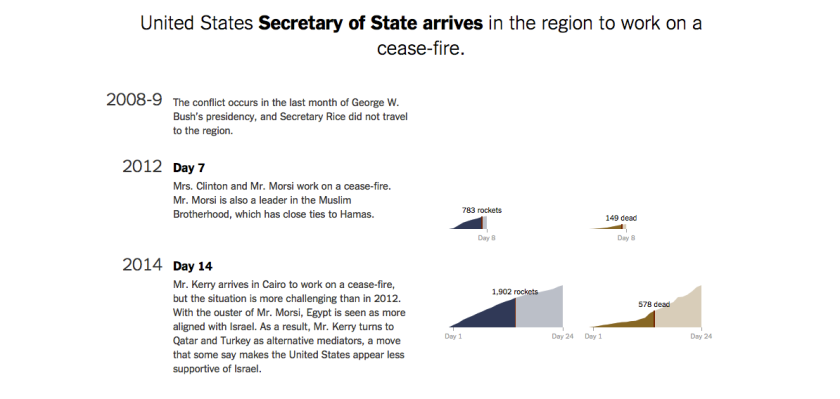It is really interesting and noteworthy to see how western and international media sources have portrayed the current situation that is unravelling another chapter to the perpetual Israeli-Palestinian conflict.
The following video clip is an Israeli propaganda video issued upon Benjamin Netanyahu’s social media platforms:
The description released on his Facebook page reads as follows:
WATCH AND SHARE this important video, which outlines the clear and obvious difference between a moral democracy defending itself, and a murderous terrorist organization
On that note, I would like to lay down some facts. The definition of democracy, let alone a “moral democracy,” would not include a country that occupies another group of people for more than 40 years and disallow them the most elementary civic and human rights. A country that pursues a discriminatory policy against a fifth of its Palestinian citizens inside the 67 borders also cannot be a democracy. In political science, Israel often used to be referred to as being a “herrenvolk” democracy– a loose-termed form of democracy that only applies for the masters of the system. The fact that Israel allows people to participate in the formal side of democracy, namely to vote or to be elected, is useless and meaningless if you do not give them any share in the common good or in the common resources of the state, or if you discriminate against them despite the fact that you allow them to participate in the elections. On almost every level, from official legislation through governmental practices as well as social and cultural attitudes, Israel is only a democracy for one group –one ethnic group– that given the space that Israel now controls, is not even a majority group anymore. In a realistic perspective with the facts applied into place, it is extremely difficult to use any known definition of democracy which would be applicable for the Israeli case.
Recently, US Secretary of State John Kerry was noted for voicing his concerns on the danger of Israel becoming an “Apartheid state.” Portrayed continuously by international corporal media, Kerry’s controversial words have been challenged and cited with facts to open the perspective that Israel’s segregated social systems and dynamics already meet the definition of apartheid.
Politicians and media figures alike have dissected this statement and applied it to various standpoints. The most extreme comes from Abby Martin suggesting strongly, and justifying with evidence, that Israel is already an apartheid state. Israel has a permit system that restricts travel for ethnic Palestinians living in the West Bank territories which limits where they can live, unless they obtain permits from the Israeli government. The check-points, that separate the West Bank and monitoring the Palestinians movement within their confined territory, are ridiculously similar to South Africa’s “Pass System” in which restricted the movement of black South Africans.
In regards to the segregation and restriction of travel, ex president Jimmy Carter was quoted in 2006 stating the following:
When Israel [occupies] territories deep within the West Bank, and connects the 200 or so settlements with a road and then prohibits the Palestinians from using that road, or in many cases even crossing that road, this perpetuates even worse instances of apartness, or apartheid, than we witnessed even in South Africa.
As the last century reveals, the take over of Palestinian land by Israeli colonies means that Palestinians are losing more land-less land to call their own means less rights. Following the establishment of the Jewish state of Israel in 1948, the land was effectively cleansed of Palestinian inhabitants. One only needs to look at the demographics today to see that over 70 per cent of the residents of Gaza once lived in what is now southern Israel.
Similar to the situation of the ignored yet displaced Palestinian citizens, there is an estimated amount of 90,000 citizens of Arab descent living in 176 unrecognized villages around Israeli. The inhabitants of such villages are considered as being “internal refugees” that were displaced after the 1948 war when they fled their homes with nowhere else to go. The status of being unrecognized by Israel signifies that thousands of Arab residents have no access whatsoever to public services including water, roads, education, healthcare, and electricity.
For the citizens they do recognize, their have been strange and seemingly cruel and unnecessary Israeli laws that separate families. Israel has upheld a law that bans Palestinians from seeing and living their spouses in Israel. Despite human rights workers denounces the law as being blatantly racist, Israel’s supreme court has legally prevented thousands of citizens in the West Bank and Gaza from living with their significant others in Israel.
Even with Israel’s reputation of being outwardly liberal and open, there are still recently opened racially segregated schools. Not only is this occurring in smaller villages, but even in Israel’s extremely liberal center- Tel Aviv. Last summer, Israel’s most liberal city introduced kindergartens and pre-schools that were segregated by race.
The discrimination and injustices within Israel do no just apply to Palestinians and Arabs. As refugees, predominantly from Ethiopia, have sought out Israel for opportunity and safety, further hate crimes and discrimination have been committed against them as well. A report in Haaretz claims that “Israel forcibly injected African immigrants with birth control” to sterilize them which dropped the Ethiopian birth rate in Israel by 20 per cent.
These unpopular truths of institutionalised discrimination and systematic oppression over any group based on race is the definition of apartheid. Though these realities are rarely discussed nor understood properly, they further into ignorance that fuels the conflict further. To really address the serious issues at hand, the following data illustrations of the situation convey the real context through the alternative viewpoint of the aid of visual representations. The following the graphics are from the site Visualizing Palestine, which serves as a site to create a visual platform with informative facts and impacting graphics about the occupied region with the objective of a better representation to further understanding. The following are prime examples to push the limits of both sides of the spectrum seeing Israel as being a “moral democracy” and the other extreme, seeing Israel as an “apartheid state.”
THE FORCED EXILE OF THE PALESTINIAN PEOPLE:

THE ENFORCED MAINTENANCE OF THE OCCUPATION:

THE CONTINUED DISPLACEMENT AND DESTRUCTION:

THE TRENDS OF VIOLENCE AND AGGRESSION BETWEEN ISRAELI AND PALESTINIAN DEATHS:

THE ILLEGAL DETENTION OF PALESTINIAN CITIZENS:

THE SEGREGATION OF NATURAL RESOURCES & VITAL NECESSITIES:



THE SEGREGATION OF TRAVEL:


THE PHYSICAL SEGREGATION OF THE WALL:

What this truly denotes to is the reality of a humanitarian tragedy against innocent civilians- Israelis, too, but particularly to those with such risk and poor standards of living in both Gaza as well as in the West Bank territories. With the conflict perpetuating with growing tensions and hatred based upon the ultimate blaming in regards to the “us and them syndrome.” With that mentality established firmly on both sides, it seems impossible for any “solution” to manifest. The mentality of both sides traces back to the primal root of fear applied in the context of playing defense to protect “us” from “them.” Keeping the minorities of both ruling forces (the Israeli government on one side with Hamas on the other), the real citizens that I have met in context, on the ground, from both backgrounds evoke a desire to solve the conflict to end all conflicts by a humanitarian aspect with the focus on nurturing victims rather than creating them. Seemingly intangible and ideal, the fear of “them” keeps it from manifesting into a tangible reality via diplomacy.
Who is to say that achieving stability in the region cannot be obtained through both soft and smart power- diplomatic compromise with all of the citizens’ best interests made into the first priority. Hard power (the use of force, coercion, and economic sanctions as an immediate fear response) has proved to be unsuccessful and outdated in context, and the new approach use the understanding of history (for this is the first time in history in which we have access to all pre-dating information recorded) and actually come to understand it and analyse it to prevent past mistakes and attempt to pave a new route in regards that justifies our position in the world as human beings.
The following is a story of hope that shows how simple and affective certain aspects of this ideal can be seen on a personal level and how truly influential diplomatic relations can be:
Following the murders of both Israeli and Palestinian teenagers, in their families’ dark times of grieving, they have turned to the other mourning families for support with deeper connotations of ceasing further violence rather than encourage more crimes of revenge.
On Sunday, the mayor of Jerusalem posted on Facebook about an “emotional and special telephone conversation between two families that have lost their sons,” both the families of the Israeli teen Naftali Fraenkel and the Palestinian teen Mohammed Abu Khdeir. Nir Barkat said that during his visit to the Fraenkel family, he had a chance to speak to the father of Mohammed Abu Khdeir and expressed his pain regarding the “barbaric” murder in which he was burned alive after sustaining severe head trauma.
After this encounter, the mayor then suggested that Hussein Abu Khdeir should speak with Yishai Fraenkel, the uncle of Naftali Fraenkel, who was recently quoted telling the press that
“the life of an Arab is equally precious to that of a Jew. Blood is blood, and murder is murder, whether that murder is Jewish or Arab.”
The Mohammed’s father and Naftali’s uncle did indeed take the mayor’s advice and sought out each other’s comfort and guidance via telephone.
Another significant inaction that was organised by Rabbi Rafi Ostroff, the chair of the religious council of Gush Etzion, involved Palestinians from Hebron consoled the Frankel family. A group of Palestinians accompanied by the Rabbi showed up at the door of the Fraenkel family with intentions of “comforting the bereaved.” They came backed by the following sentiment,
“things will only get better when we learn to cope with each other’s pain and stop getting angry at each other. Our task is to give strength to the family and also to take a step toward my nation’s liberation. We believe that the way to our liberation is through the hearts of Jews.”
Following the conclusion of the visit, the same Palestinian man (anonymous for confidentiality purposes) was interviewed again and shared that they were “received very, very nicely” from the Fraenkel family and, more specifically that Rachel Fraenkel (the mother of Naftali) was “incredible.”
The significance of such actions are absolutely incredible. The portrayal of the current situation in the most dominant outlets in both western and international media have such negative connotations that provoke the separation of ideologies and differences which ultimately dehumanizes the “enemy” and provokes the “us and them” syndrome.
31.898043
35.204271









































